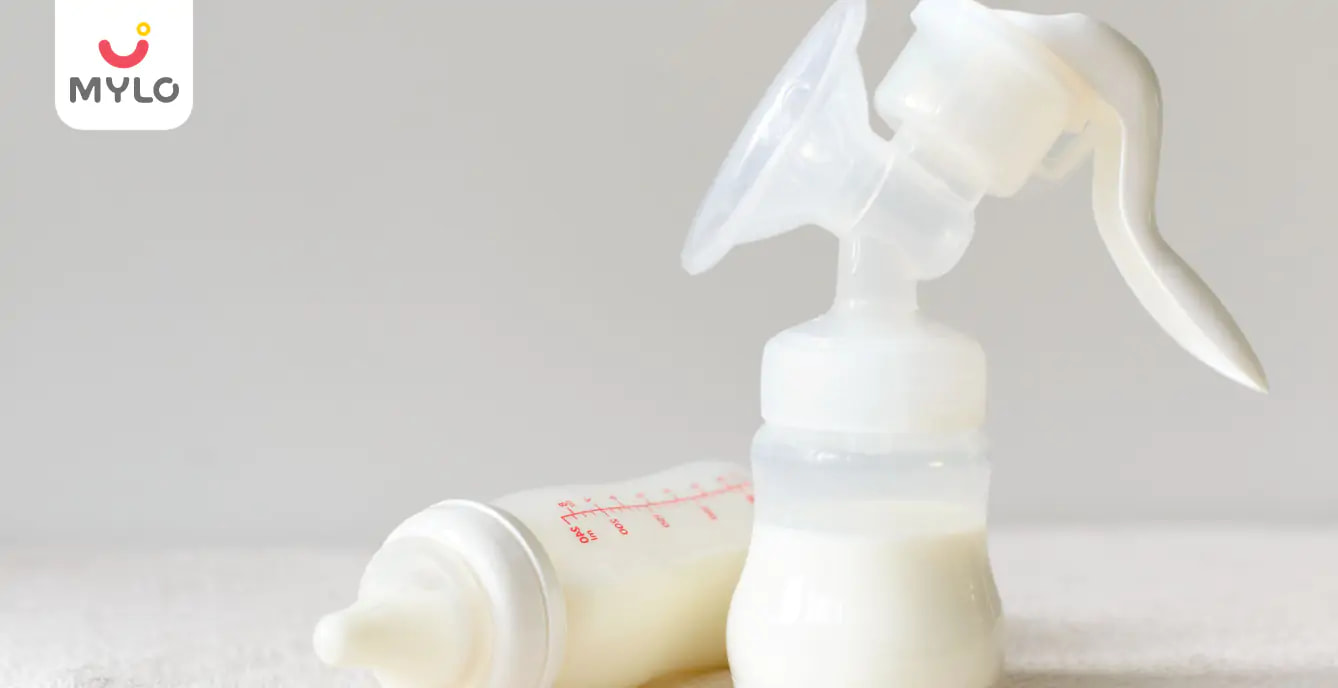Get MYLO APP
Install Mylo app Now and unlock new features
💰 Extra 20% OFF on 1st purchase
🥗 Get Diet Chart for your little one
📈 Track your baby’s growth
👩⚕️ Get daily tips
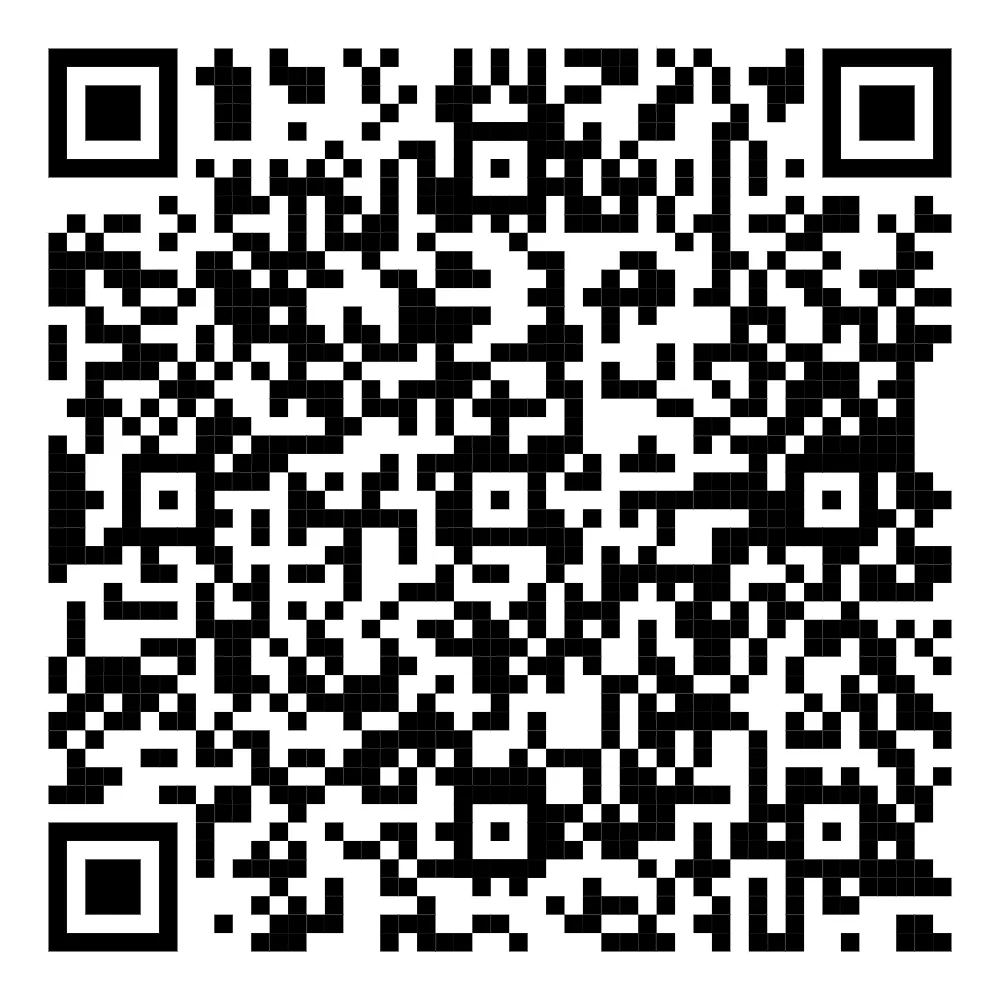
OR


Article Continues below advertisement
- Home

- Breastfeeding & Lactation

- Does A Manual Breast Pump Help to Pump More Milk?
In this Article
- When should you use a breast pump?
- 1. Establishing Milk Supply
- 2. Engorgement Relief
- 3. Milk Storage
- 4. Supplementing Breastfeeding
- 5. Relieving Discomfort
- What are the types of breast pumps?
- 1. Manual breast pumps
- 2. Electric breast pumps
- How to use manual breast pump?
- 1. Prepare
- 2. Assemble the pump
- 3. Position the breast shield
- 4. Start pumping
- 5. Switch sides
- 6. Store milk
- Tips for using a manual breast pump effectively
- 1. Relax and be patient
- 2. Massage your breasts
- 3. Breast compression
- 4. Pump both breasts
- 5. Maintain a consistent pumping schedule
- How to use electric breast pump?
- 1. Prepare the pump
- 2. Find a comfortable position
- 3. Position the breast shields
- 4. Turn on the pump
- 5. Let the pump do the work
- 6. Express milk
- 7. Store milk properly
- Tips for using an electric breast pump effectively
- 1. Find a comfortable place to pump
- 2. Wash hands and have clean supplies
- 3. Use a warm cloth and massage the breasts
- 4. Follow the instructions and use the correct breast flange size
- 5. Pump for 15-20 minutes per breast or 15-20 minutes if double pumping
- FAQs
- 1. How long should you use a breast pump at a time?
- Key Takeaways
Breastfeeding & Lactation
 4702
4702Does A Manual Breast Pump Help to Pump More Milk?
Updated on 3 November 2023
“Due back at the office,” the words kept spinning inside Drishti’s head as she sat on the bedside, bewildered in a world of diaper changes, sleepless nights and professional commitments. It felt like only yesterday when she had given birth to her bundle of joy, Ruhaan, but how fast the six months had passed since then. So, she kept staring at the breast pump on her bedside table, knowing it was her last resort while wondering how to use a breast pump.
So, whether you're a sleep-deprived parent seeking independence or a working mother about to rejoin the workforce, join Drishti as she unravels the art and science of using a breast pump – a tool that can transform her motherhood journey and potentially transform yours too.
When should you use a breast pump?
There are several instances when using a breast pump can be beneficial for breastfeeding mothers. Here are five common situations where a breast pump can be useful:
Article continues below advertisment
1. Establishing Milk Supply
In the early postpartum period, a breast pump can help stimulate milk production and establish a healthy milk supply, especially if the baby is unable to latch or is in the neonatal intensive care unit (NICU).
2. Engorgement Relief
When breasts become engorged and uncomfortably full, a breast pump can help provide relief by expressing milk and alleviating pressure.
3. Milk Storage
Breast pumps allow mothers to express and store breast milk for later use. This is particularly helpful for mothers who need to be away from their baby for work, travel, or other commitments.
4. Supplementing Breastfeeding
Some mothers may need to supplement breastfeeding with bottle-feeding to meet their baby’s nutritional needs. A breast pump enables them to express milk and provide it via a bottle.
5. Relieving Discomfort
In situations where a mother is experiencing nipple pain, plugged ducts, or mastitis, using a breast pump can help drain the breast and provide relief.
Article continues below advertisment
Remember, every breastfeeding journey is unique, and the decision to use a breast pump should be based on individual circumstances and goals.
You may also like : How to Sterilize Breast Pump: A Comprehensive Guide for New Moms
What are the types of breast pumps?
Before diving into the specifics of how to pump breast milk, it's important to understand the different types available. There are two main types of breast pumps: manual and electric.
1. Manual breast pumps
Manual breast pumps are operated by hand and require you to manually pump the handle to express milk. They are portable, affordable, and easy to clean. Manual breast pumps are a great option if you only need to pump occasionally or if you prefer a more hands-on approach to expressing milk.
2. Electric breast pumps
Electric breast pumps, on the other hand, are powered by electricity or batteries and automatically pump the milk for you. They come in different models, including single and double pumps, allowing you to pump from one breast or both breasts simultaneously.
Article continues below advertisment
How to use manual breast pump?
Using a manual breast pump may seem daunting at first, but with a little practice and patience, it can become second nature. Follow these step-by-step instructions to effectively use a manual breast pump:
1. Prepare
Start by washing your hands thoroughly and ensuring that all the parts of the breast pump are clean and sterilized. Find a quiet and comfortable place where you can relax and focus on pumping.
2. Assemble the pump
Follow the manufacturer's instructions to assemble the manual breast pump. Typically, it involves attaching the breast shield to the pump body and connecting the handle.
3. Position the breast shield
Gently position the breast shield over your nipple, making sure it fits comfortably and creates a seal around the areola.
Article continues below advertisment
4. Start pumping
Hold the breast pump with one hand and use the other hand to manually pump the handle. Start with short, rhythmic squeezes, gradually increasing the speed and intensity as your milk starts to flow.
5. Switch sides
Once your milk flow slows down, switch to the other breast and repeat the process. Alternating breasts helps stimulate milk production and ensures both breasts are adequately emptied.
6. Store milk
After pumping, transfer the expressed milk into a clean and sterilized container. Label it with the date and time, and store it in the refrigerator or freezer according to your needs.
Tips for using a manual breast pump effectively
While using a manual breast pump, keep these tips in mind to optimize your pumping sessions:
1. Relax and be patient
Creating a calm and relaxing environment will help stimulate letdown and make the pumping experience more enjoyable.
Article continues below advertisment
2. Massage your breasts
Gentle breast massage before and during pumping can help increase milk flow and improve efficiency.
3. Breast compression
Applying gentle pressure to the breast while pumping can further stimulate milk flow and enhance the effectiveness of the pump.
4. Pump both breasts
If you are double-pumping, start with the breast that produces less milk to ensure both breasts are emptied fully.
5. Maintain a consistent pumping schedule
Establishing a regular pumping routine, especially if you are exclusively pumping, can help maintain milk supply and avoid engorgement.
How to use electric breast pump?
Here's a step-by-step guide on how to use an electric breast pump effectively:
Article continues below advertisment
1. Prepare the pump
Familiarize yourself with the different parts of the electric breast pump and ensure they are clean and properly assembled.
2. Find a comfortable position
Sit in a relaxed and comfortable position, ensuring good back support. Some mothers find that leaning slightly forward can help with milk flow.
3. Position the breast shields
Center the breast shields over your nipples, making sure they fit properly and create a seal. Some electric pumps offer different sizes of breast shields, so choose the one that fits you best.
4. Turn on the pump
Start the electric breast pump at the lowest suction level and gradually increase to a comfortable level. Avoid starting at high suction levels, as it may cause discomfort or pain.
5. Let the pump do the work
Electric breast pumps automatically create suction and mimic the sucking motion of a baby. Allow the pump to do its job, but if you feel any discomfort or pain, adjust the suction level accordingly.
Article continues below advertisment
6. Express milk
Continue pumping until your breasts feel empty or until you have collected the desired amount of milk.
7. Store milk properly
Transfer the expressed milk into a clean and sterilized container, labeling it with the date and time of pumping. Store it in the refrigerator or freezer according to your needs.
You may also like : Breast Pump 101: The Ultimate Guide to Stress-Free Pumping Sessions
Tips for using an electric breast pump effectively
1. Find a comfortable place to pump
It is important to find a quiet and comfortable space where you can relax while pumping. This can help stimulate milk flow and make the pumping experience more enjoyable.
2. Wash hands and have clean supplies
Before every pumping session, make sure to wash your hands thoroughly to maintain cleanliness. Additionally, ensure that all the pump parts and accessories are clean and sterilized.
Article continues below advertisment
3. Use a warm cloth and massage the breasts
Prior to pumping, applying a warm cloth to the breasts can help stimulate milk flow. Gentle massaging of the breasts can also aid in milk letdown and improve pumping efficiency.
4. Follow the instructions and use the correct breast flange size
It is crucial to use the correct size breast flange for optimal comfort and efficiency. Refer to the instructions provided with the pump to ensure proper usage.
5. Pump for 15-20 minutes per breast or 15-20 minutes if double pumping
Aim to pump for around 15-20 minutes per breast or a total of 15-20 minutes if double pumping. This timeframe allows for sufficient milk expression and helps maintain milk supply.
FAQs
1. How long should you use a breast pump at a time?
It is generally recommended to pump for about 15-20 minutes per breast or 15-20 minutes if double pumping. This duration allows for adequate milk flow and stimulation without overstimulating the breasts.
2. What is the best position to pump breast milk?
Article continues below advertisment
The best position to pump breast milk is to sit down with your shoulders set and your back straight. This position ensures proper alignment and comfort during the pumping session. You can use a comfortable, padded chair or cushion to support your back and arms.
Key Takeaways
In conclusion, using a breast pump is a personal decision that depends on individual circumstances and goals. The timing of when to use a breast pump can vary, whether it's to initiate breastfeeding, create a backup supply of milk, or relieve engorgement. When learning how to use a breast pump, it is recommended to follow the proper steps in order to use a breast pump with confidence and success.
References
1. Rasmussen KM, Geraghty SR. (2011). The quiet revolution: breastfeeding transformed with the use of breast pumps. Am J Public Health.
2. Meier PP, Patel AL, Hoban R, Engstrom JL. (2016). Which breast pump for which mother: an evidence-based approach to individualizing breast pump technology. J Perinatol.
Article continues below advertisment



Written by
Vijay Kumar
Get baby's diet chart, and growth tips
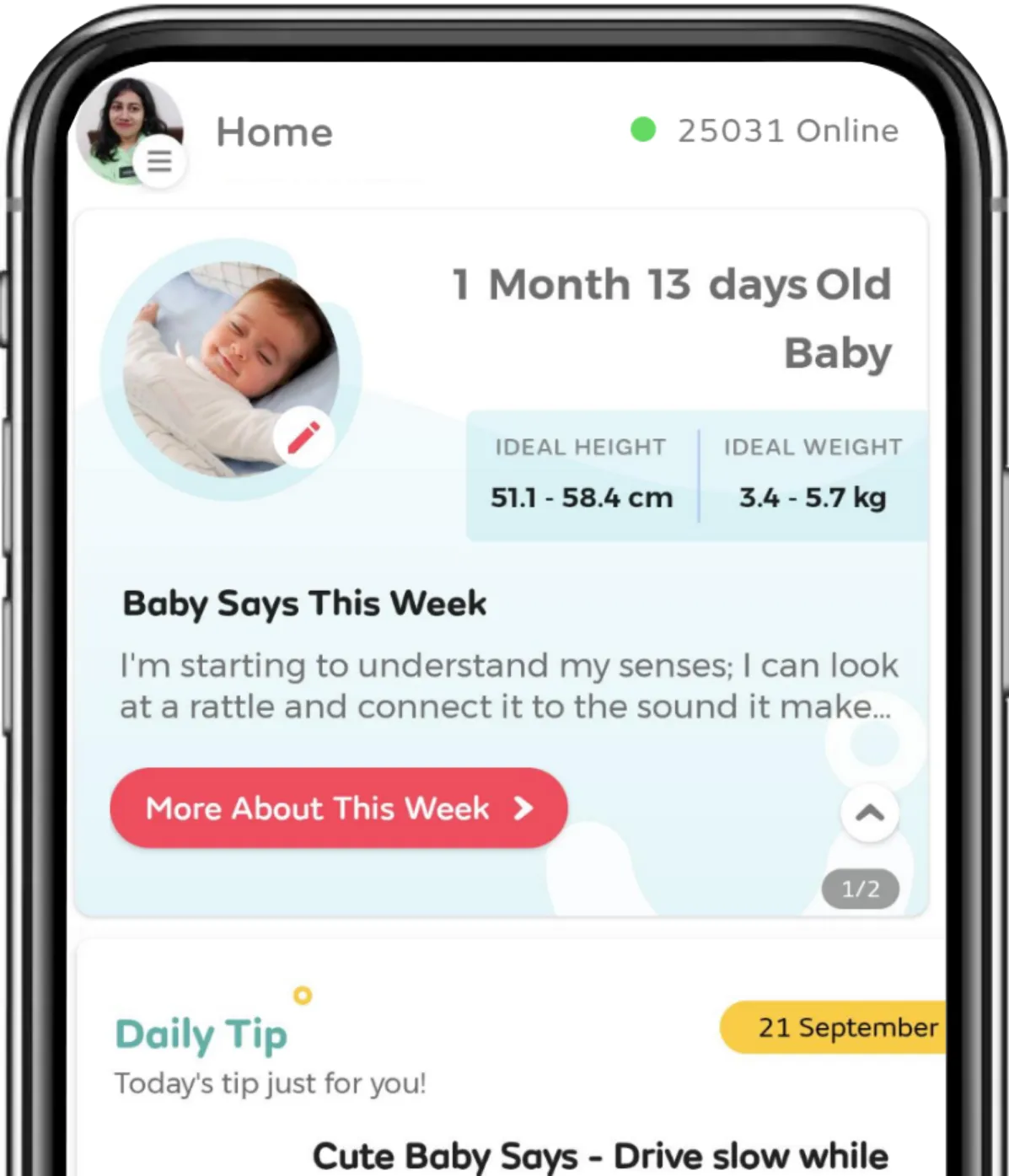
Related Articles
Related Topics
RECENTLY PUBLISHED ARTICLES
our most recent articles
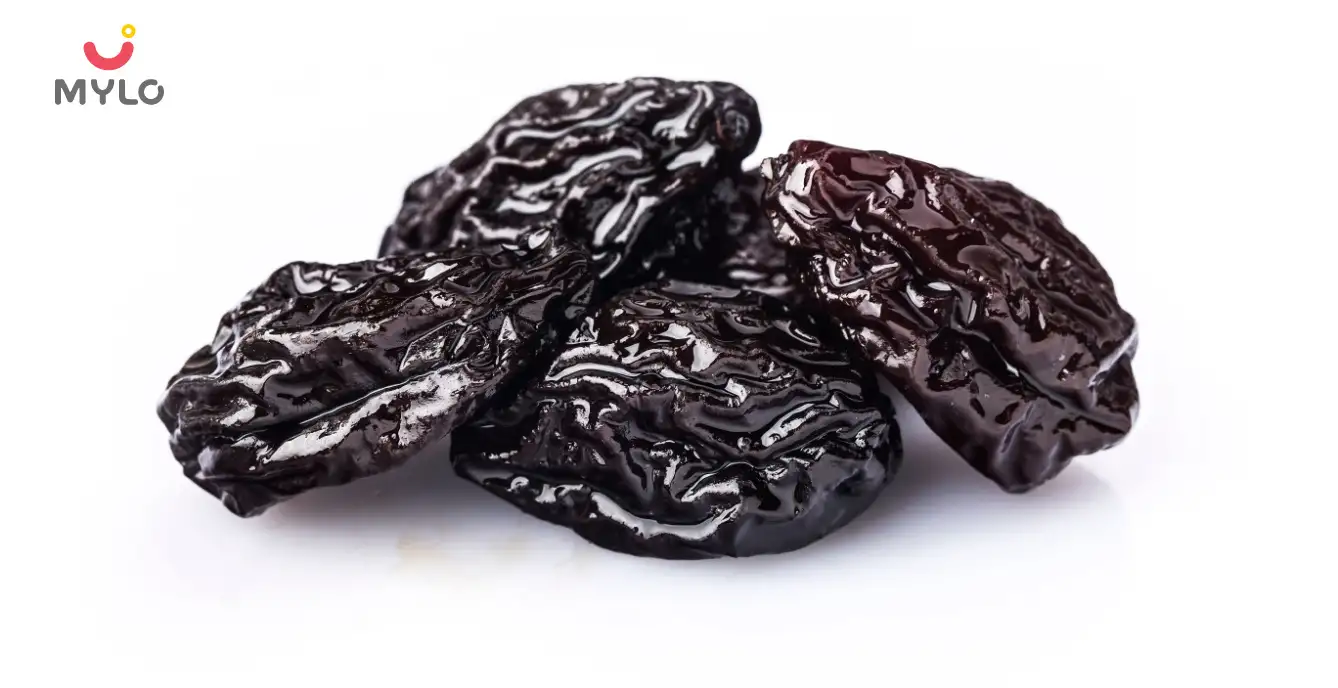
Diet & Nutrition
গর্ভাবস্থায় আলুবোখরা: উপকারিতা ও ঝুঁকি | Prunes During Pregnancy: Benefits & Risks in Bengali
(1,616 Views)

Diet & Nutrition
গর্ভাবস্থায় হিং | ঝুঁকি, সুবিধা এবং অন্যান্য চিকিৎসা | Hing During Pregnancy | Risks, Benefits & Other Treatments in Bengali
(853 Views)
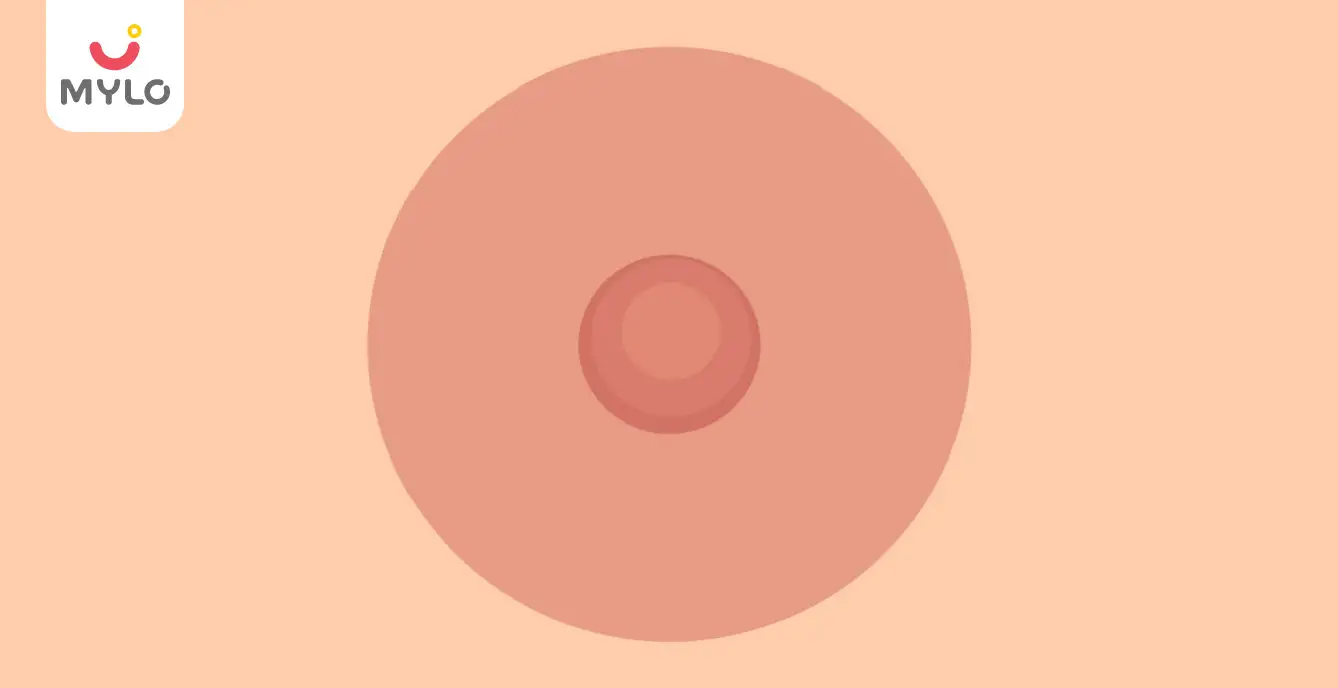
Women Specific Issues
স্তনের উপর সাদা দাগ: লক্ষণ, কারণ এবং চিকিৎসা | White Spots on Nipple: Causes, Symptoms, and Treatments in Bengali
(2,734 Views)

Diet & Nutrition
গর্ভাবস্থায় পোহা: উপকারিতা, ধরণ এবং রেসিপি | Poha During Pregnancy: Benefits, Types & Recipes in Bengali
(270 Views)

Diet & Nutrition
গর্ভাবস্থায় মাছ: উপকারিতা এবং ঝুঁকি | Fish In Pregnancy: Benefits and Risks in Bengali
(1,424 Views)

Diet & Nutrition
গর্ভাবস্থায় রেড ওয়াইন: পার্শ্ব প্রতিক্রিয়া এবং নির্দেশিকা | Red Wine During Pregnancy: Side Effects & Guidelines in Bengali
(1,479 Views)
- ইনার থাই চ্যাফিং: কারণ, উপসর্গ এবং চিকিৎসা | Inner Thigh Chafing: Causes, Symptoms & Treatment in Bengali
- গর্ভাবস্থায় ব্রাউন রাইস: উপকারিতা ও সতর্কতা | Brown Rice During Pregnancy: Benefits & Precautions in Bengali
- Velamentous Cord Insertion - Precautions, Results & Safety
- Unlock the Secret to Flawless Skin: 7 Must-Have Qualities in a Face Serum
- Unlock the Secret to Radiant Skin: How Vitamin C Serum Can Transform Your Complexion
- Gender No Bar: 10 Reasons Why Everyone Needs a Body Lotion
- Unlock the Secret to Radiant Skin How to Choose the Perfect Body Lotion for Your Skin Type
- Top 10 Reasons to Apply a Body Lotion After Every Bath
- Communication in Toddlers: Milestones & Activities
- How to Improve Vocabulary for Toddlers?
- A Comprehensive Guide to Understanding Placenta Accreta
- Vulvovaginitis in Toddlers Causes, Symptoms and Treatment
- A Comprehensive Guide to Understanding Cerebral Palsy in Children
- Bitter Taste in Mouth During Pregnancy: Understanding the Causes and Remedies


AWARDS AND RECOGNITION
Mylo wins Forbes D2C Disruptor award
Mylo wins The Economic Times Promising Brands 2022
AS SEEN IN
















At Mylo, we help young parents raise happy and healthy families with our innovative new-age solutions:
- Mylo Care: Effective and science-backed personal care and wellness solutions for a joyful you.
- Mylo Baby: Science-backed, gentle and effective personal care & hygiene range for your little one.
- Mylo Community: Trusted and empathetic community of 10mn+ parents and experts.
Product Categories
baby carrier | baby soap | baby wipes | stretch marks cream | baby cream | baby shampoo | baby massage oil | baby hair oil | stretch marks oil | baby body wash | baby powder | baby lotion | diaper rash cream | newborn diapers | teether | baby kajal | baby diapers | cloth diapers |



